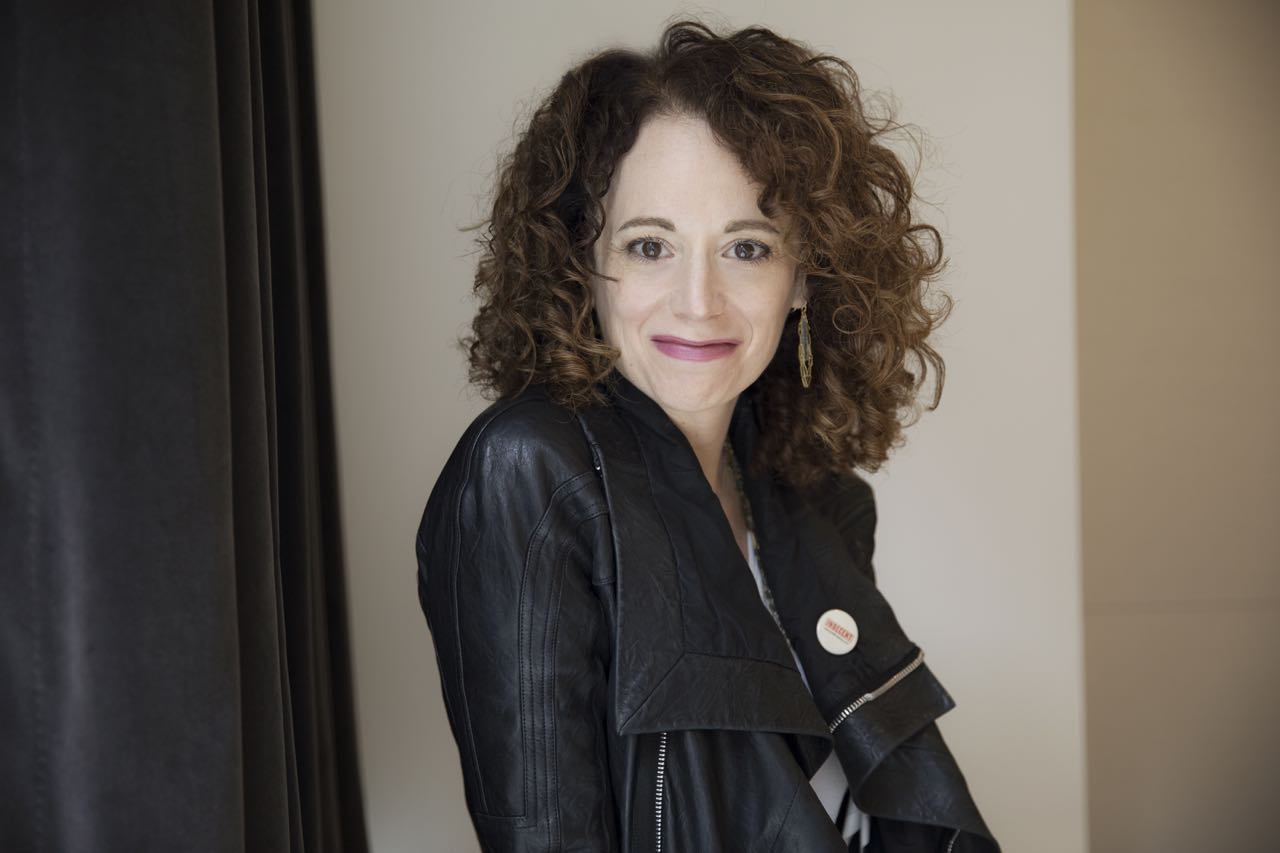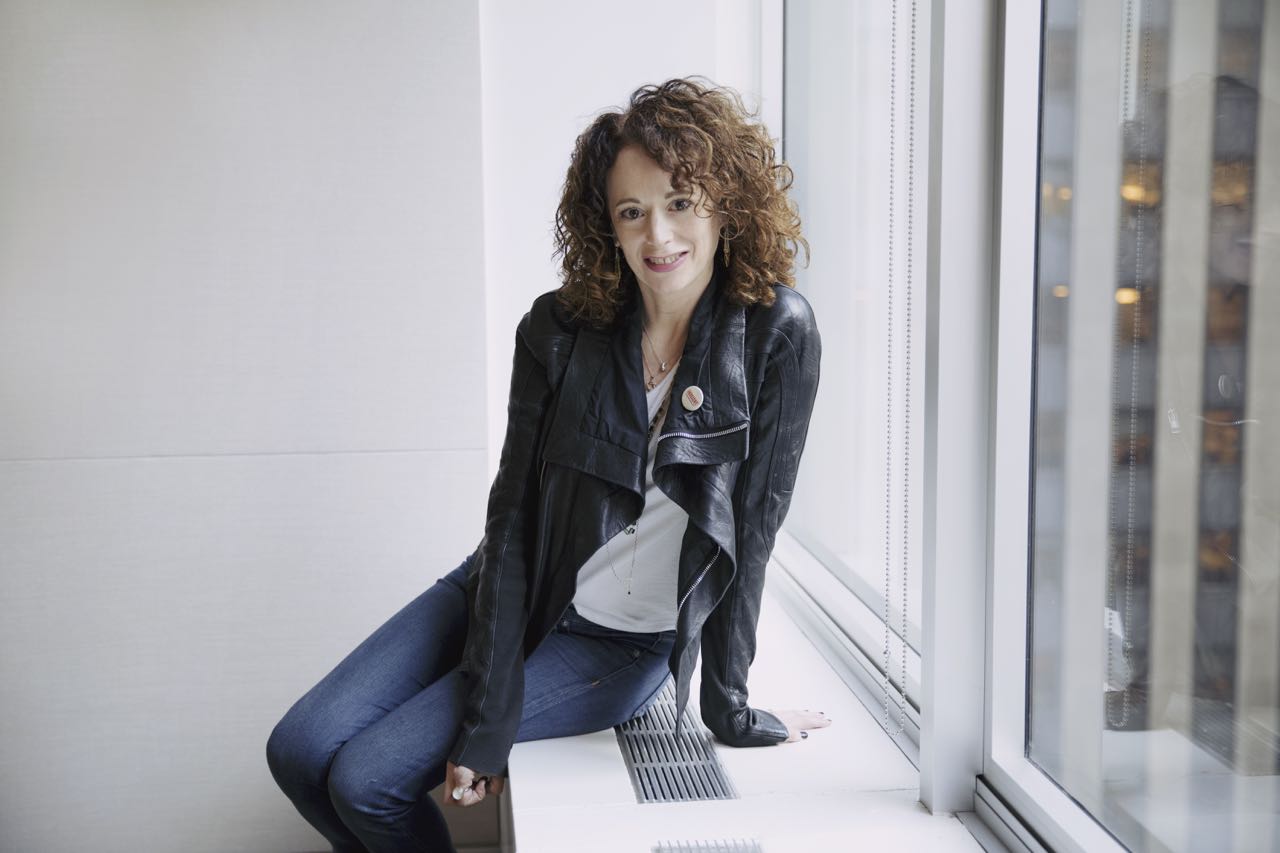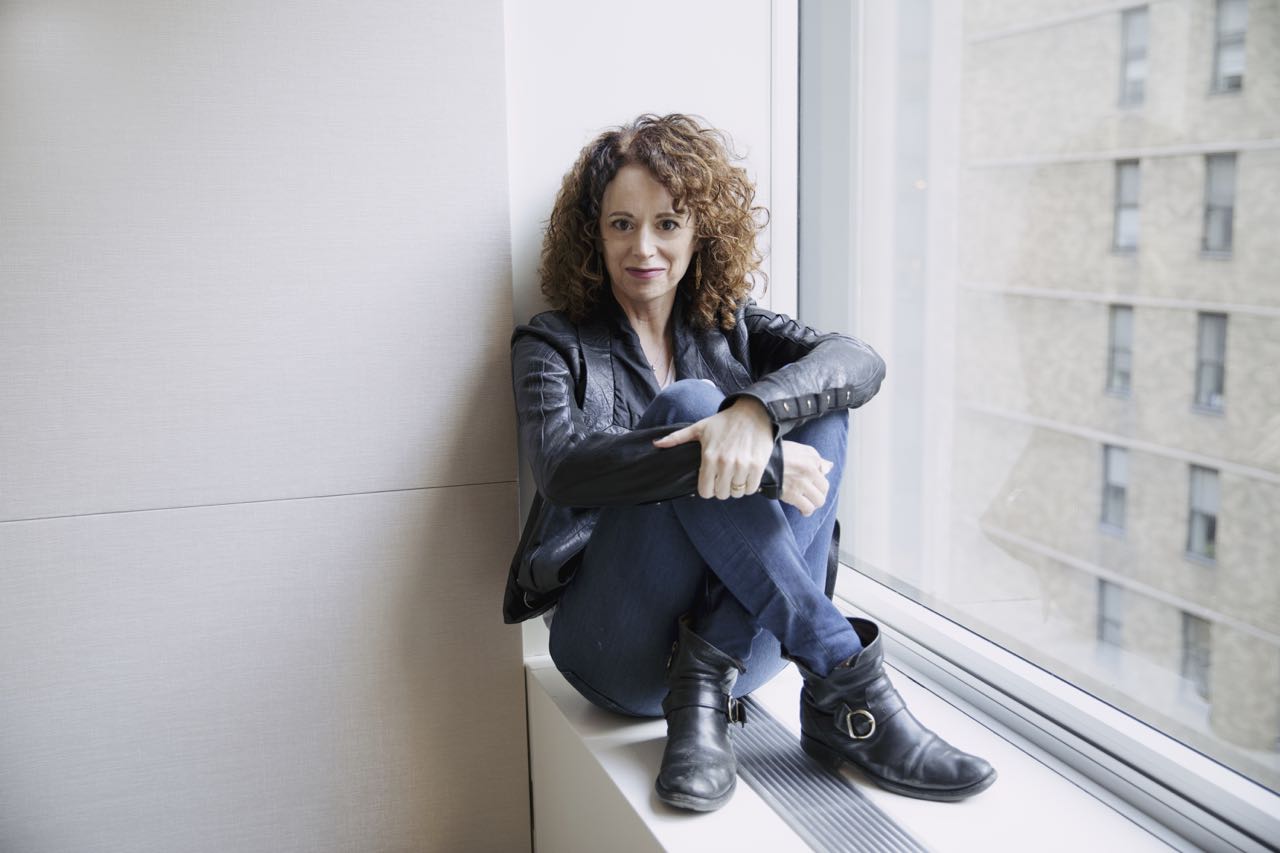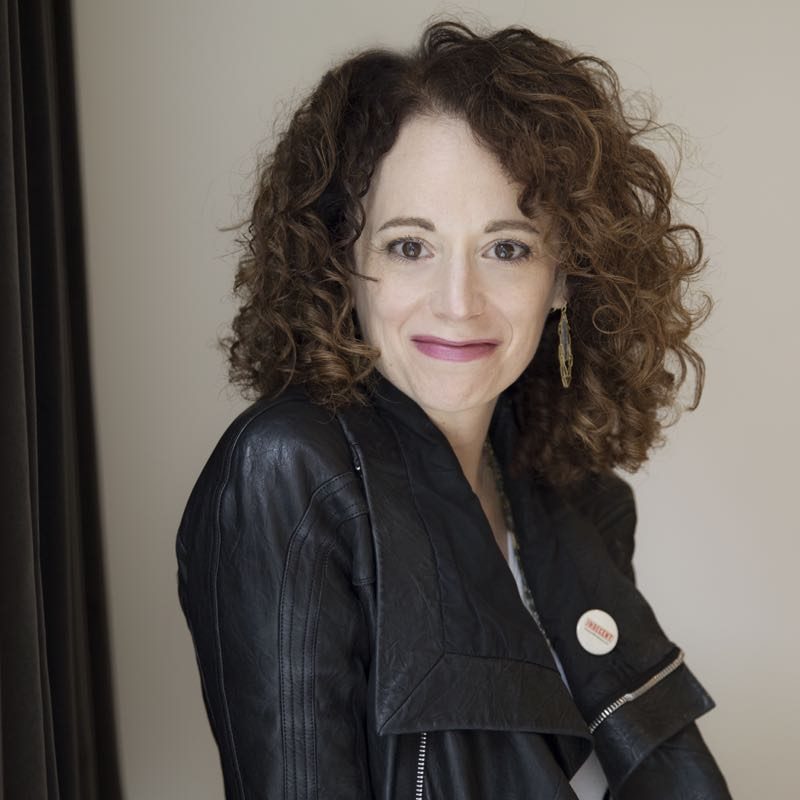An Interview with Rebecca Taichman

Written by Victoria Myers
Photography by Jacqueline Harriet
June 20th, 2017
On Sunday, June 11th, 2017, for the seventh time in the history of the Tony Awards, a woman’s name was announced as the winner of Best Director of a Play (since 2000, there have been 14 nominations of women in this category versus 62 for men), and that woman was Rebecca Taichman, who directed and co-created, along with playwright Paula Vogel, Indecent. Indecent also marked Rebecca’s Broadway debut, despite years of directing at major Off-Broadway and regional theatres including her frequent collaborations with playwrights like Sarah Ruhl. Known for her bold, visual staging, during Tony Awards season there was surprisingly little attention paid to Rebecca’s work on Indecent, with the coverage instead focusing on her role as one of the only two women nominated in both directing categories. After the Tonys, and after it was announced that Indecent would be closing on Broadway, we sat down with Rebecca to discuss her process for directing and creating the play, and also, yes, being a director who is a woman.
I want to go way back to your thesis production. There’s been some written about how you used the transcripts from the trial over God of Vengeance. When you knew it was something you wanted to keep working on, what were your initial thoughts about how to do that?
I tried to make a piece called The People Versus the God of Vengeance as my thesis project in graduate school. It interwove transcripts of the obscenity trial with text of the play. It also included other found material, but no writing by me. It was very clear to me that there was an important story to tell about what happened to this play in New York in 1923 and how it was an extraordinary window into political history, Jewish history, gay history. But I did not have the capacity to tell that story myself. So, I didn’t know what it should be. I just knew that I didn’t want the memory of what had happened to be forgotten, and I wanted to find a way to tell it that would give it life again. I knew that needed to involve a writer. Paula Vogel was clearly, to me, the perfect person. I just didn’t think she’d say yes. And she did.
What were your initial conversations like when you were pitching it and talking about it? Especially with something so director-driven in a way that’s a little different than how a lot of theatre happens here?
Very early, I asked Paula if she would be interested in doing a piece about the God of Vengeance, and I was thinking very specifically about this moment in New York in the ‘20s, and Paula said to me, “Do you mind if we widen it way out? I think there’s a much bigger play here, a much bigger idea here. Are you okay with that?” And I said, “Yes. Go.” So she had a vision of taking [the story of the play] from its first draft through the ‘50s, which was just brilliant and very exciting to me. By the time I went to Paula with the idea, enough time had passed that I was no longer really emotionally attached to my own impulse. I was excited to work with such a visionary writer and I wanted her to follow her instincts, not be driven by me pushing.
Did you find your process as a director changing because it was a different process than getting a finished script?
I have never directed something where I knew the DNA so well. I knew every second deeply and intimately before I walked into that rehearsal room. The story ended up being so personal to me in such a profound way, so it did feel very different. Usually, in the process of directing something, you learn the piece as you’re directing it to some measure, and that happened also on this, but what I came in knowing was much, much more than I ever have before.
The show has really strong visual images. Where did that part of the process come in for you? Was that an early instinct of, “This is how I see it. This is what it feels like to me”? Or did that come later? Some of both?
There’s such a huge group of people that find the visual world together. There are extraordinary designers. The visual language of it starts from Paula’s language, and the idea always was this empty theatre space in which there are sort of ghosts of the theatre that rise from the dead to tell a story. I’ve worked with Riccardo Hernandez, who did the set, many, many times, and he always comes in with something I never would have thought of. That’s true of every designer on the process. I think one of the jobs as a director is to inspire people to do their very most exciting work and recognize it when it’s happening. So, I don’t feel comfortable or honest claiming ownership to all those ideas. It’s a whole family of people that came to the visual vocabulary that’s on that stage.
With that visual vocabulary, what was your process like for then making sure that every aspect complemented each other, but that you weren’t necessarily saying the same thing visually as you were textually?
It was interesting on this project how emotional instinct was always a better driver than intellect. Always. And in a way, the process was in trusting that. Partly because I knew the material so well; you can’t really riff off a melody unless you know the melody. This melody I knew incredibly well, and when I deeply trusted what seemed like illogical or strange instincts, they were the most profound and honest. Paula Vogel was very inspiring in this, and she’s quite an inspiration in not being driven artistically by fear, but being driven by a kind of wild openness. Whenever something got overthought it was very obvious that it stopped working. The other thing that was really obvious was whenever anything got sentimental, it stopped working immediately. The play just kicked it right out.
Can you give an example of that?
When we were rehearsing it for [the Broadway production], [there’s a scene where] they’re on Ellis Island, and two people cross because they don’t get in. That hadn’t been in the piece before. The idea came from what’s happening in our country [today], and I hoped to draw attention to it and be a reminder of just how horribly difficult it was to get into this country then, as it is now; the borders were shut down in ’21 and ’24. They closed the country down. So I knew I wanted two people to cross the other direction who didn’t make it in. When we tried it the first time, I said to the glorious actress Mimi [Lieber], “Your daughter got in and you didn’t get in. Let’s see what that does,” and she played that and was weeping and it was so, so clearly overstated. The adjustment is: same backstory, but you’re in shock, and you aren’t at a place yet to be able to experience the emotion of it. So she’s just looking back to see if she can see her in that version. It’s not sentimentalized. It’s lived. You get the whole story and I find it very moving.

In the development and staging of the piece, how did you work on the transitions? Because you have the time jumps, the jumps in location. How did you work on the movement of the production so that it was part of the story?
I resist with everything in me this idea of transitions. I think stage time is stage time, so the story should continue through whatever stage time you have and ideally not sort of stop and jump cut when lights dim and people run around, and the story is sort of paused. That’s something I’m exploring in general and really feel strongly about as a director. I find as soon as you say the word “transition,” everybody’s thinking about a thing that I didn’t want to make. We tried to find a word to replace it. We called them the “rugelach.” So to find the rugelach, it was mind-numbingly frustrating.
The first step of that process was just the practical reality of where one actor had to go to and what they had to get and what came out of what suitcase. That choreography was absurdly difficult and unbelievably complicated and I am not good at that. In fact, I’m the opposite of good at it. I’m impatient about it. And thank god we have these unbelievable stage managers who really coordinated that whole thing and mostly asked me, “Could you leave?” What I wanted was first to see what had to happen practically. It took a tremendous amount of work and meticulous attention to detail. It doesn’t look that complicated, but it actually is, especially when you’re dealing with things coming out of suitcases.
That was the first layer of that work, and it was done in spite of me. Then David Dorfman made them dance—David and I were always working in a deeply connected way. He would create something and I would make a suggestion and he would create something else. He would inspire me and then I would inspire him. And the actors had incredible ideas, too. They’re built very collaboratively. And sometimes with this cast, who I just love, I would say to them, “I can’t figure out how to go from this moment to this moment. Anybody have any ideas?” And they would become this wonderful brainstorm. Then we were lucky enough to get to do [the show] four times with the same people, so we got to really refine and really meticulously and lovingly craft them. Now they’re crafted within an inch of their life, but it was a huge, long process.
I want to ask you a couple of questions that I asked Paula. Since you’re dealing with source material that was originally written by a man, your protagonist is also a man, and you have a lot of men looking at women and writing about women, what was your process for using the male gaze and what you wanted to say about that?
I think Paula has written this play that exists on so many levels and it’s such a beautifully complicated story, there’s just no simple answer to that. All the men in the play are very beautifully complex. Indecent celebrates the fact that this young man created this gorgeous love scene between two women, and then there’s a scene where they’re rehearsing a put-in and you get this very funny skewering of a male director’s staging these two women kissing and that very different view of what that relationship is to the material. I just love that at the heart of the play is this beautiful stage manager who is a man. And honestly, I don’t think about it that way. I think about it as this beautiful troupe of people who are telling this extraordinary story.
The Holocaust comes up in the show, and I was wondering what your process was for using that imagery and those themes, both in the sense of using something that is emotionally loaded, and also the fact that hopefully everyone in the audience understands the significance and outcome of that event?
By virtue of the endpoint of the story that Paula saw, which was absolutely and very clearly the endpoint, it had to pass though that time period and that horrific event—ashes to ashes, this troupe rises from the dust and they return to the dust, and that is the shape of the piece. The challenge was not, “Does it belong?” It was, “How do we put this on stage in a way that is not emotionally manipulative?” Paula had originally written that the Yiddish gets rained away on the wall, like rain just wipes the Yiddish off the wall, and then the video artist that we worked with, Tal Yarden, turned it into these disappearing letters. That became to me, and I think Paula, a very profound and important way to talk about what happened, which was the attempt to murder an entire language, not just a people (not that there’s a “just”), and how do you embody that? How do you even talk about that and acknowledge that in a room with people? So, that was a very important act, I felt, to create a moment of public community acknowledgement that there was an attempt to really wipe a language out. The language isn’t gone, but it has suffered tremendously from what happened. This is in my personal history, and I was very aware and very cautious about never manipulating emotion or over-emotionalizing it. Paula wrote the scene that happens in the attic in one draft, and I read it and I just thought it was absolutely perfect. Staging that scene is such a gift to get to do. Staging that scene was incredibly easy, really. What follows it was mysterious and exists in silence. It’s what I said before, it just can’t have sentimentality and it had to remain true to the story we were telling.
Do you feel that the play’s Jewish in form and not only in content?
In the sense of that Talmudic examining and examining and examining, this repetitive looking back and asking questions and digging for more knowledge. In that sense, I think there is a sort of a Jewish spirit embedded in the structure. But I’ve found sitting in the audience—and this gives me great joy—that this play touches all different kinds of people. And all different kinds of people who are not Jewish relate to it in very profound ways, for many, many reasons. Unfortunately, so many of us share history of hatred and a history of being rejected by a community and of feeling other. I think that it tells a very Jewish story that so many of us share.

You just won the Tony for Best Director of a Play. It’s the seventh time that award has gone to a woman. Going through that Tony process and awards season, did you feel like you were treated differently in interviews and features than your male counterparts, particularly in terms of the questions that were asked to you?
You just don’t know what happens in rooms that you’re not in, right? So I don’t really know the answer to that question. I can say that I felt very aware of how important it was to talk about the inequity that exists, and that it was a responsibility of mine, given the fortune that I was having to bring that up and to talk about it. So I also kept creating that conversation. I think that it was a topic for many people because it’s something we need to talk about. That actually felt exciting and important to me, not like, “Ugh. We’re stuck on this tedious topic.” We need to talk about how we change the inequity—both gender and racial—and as a community we need to be looking at that and figuring out how we change it. I was very aware of how few women were directing on Broadway this season and have directed in the past. It was something I longed and still do long to talk about and create dialogue around.
In your career, do you feel or have you felt that you had to think more about how you present yourself in rehearsal rooms and meetings than your male counterparts in terms of appearance or just in general attitude?
When I was much younger, I was very aware of being a woman in a world that wasn’t habituated to women in that position. That was truer then than it is now. There was never an option of changing how I act or look. I just can’t. I don’t fake it well and I don’t lie well. I’m not a mask wearer. So that was never a viable option to me. It’s gone now, but I did for a long time feel very aware of how easy it was to quickly be perceived as a raging bitch or as an indecisive, lost, overly emotional director, and that there was this very small line in between those two perceptions and it was very difficult to figure out how to walk that line. As a younger person, I was confounded by it, and sort of trying to figure out how to navigate it. I don’t feel that anymore, and it could be for many reasons. I’m just more experienced. I have more confidence. I’m less afraid than I was then. Also, there are more women directing now. It’s not enough, but the circumstances and the consciousness have shifted to some degree from when I began. So I don’t really think about it. I don’t worry about it. I just want to tell a story that moves people. And it used to be a voice in my head and it is no longer.
Did you ever feel pressure to straighten your hair?
No. I would never do it. Listen, I don’t think what a director looks like is an issue. Or it’s certainly not felt that way to me. Other directors may feel differently, but I really don’t.
What’s something you think the theatre community can do to improve gender equality?
Dialogue around the issue is very important. Consciousness around the issue’s very important. I feel strongly that it is good and wise to talk about the gender and the racial inequity both, because both exist in a very profound way. I think dialogue and conversation that includes both of those issues is essential. I think the question is how to create more opportunities for women directors and how do we get more women and people of color directing across the board. Really it just comes down to producers hiring different people. I understand in the one sense it is very easy to say, “Do it,” and on the other hand, when you’re talking about a very high stakes enterprise where a lot of money is at stake, it’s hard to go out of your comfort zone and to hire people that you don’t know. There’s a leap of faith we’re asking for, and I think that leap of faith needs to be called for more and hopefully that risk will be taken more. And hopefully, the more we create examples of women succeeding in this role, and people of color succeeding in this role in a big way, the more visible that becomes and the more likely people are to both go for it and on the producer’s side, to feel comfortable taking a risk on somebody they might not know as well.

